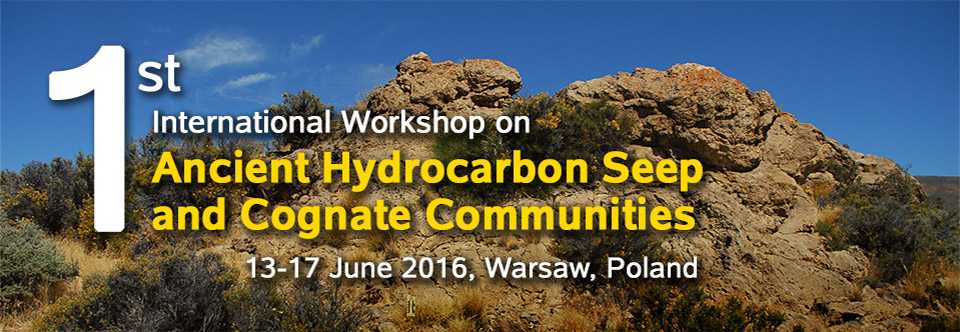
COLD-METHANE SEEPS AS AMMONITE HABITATS: EVIDENCE FROM
THE UPPER CRETACEOUS U.S. WESTERN INTERIOR
Neil H. LANDMAN1, J. Kirk COCHRAN2, Matthew P. GARB3, Neal L. LARSON4,
and Jamie BREZINA5
1Division of Paleontology, American Museum of Natural History, Central Park West at 79th St, New York, NY 10024, USA; 2School of Marine and Atmospheric Sciences, Stony Brook University, Stony Brook, NY 11794, USA; 3Earth and Environmental Sciences, Brooklyn College, 2900 Bedford Ave, Brooklyn, NY 11210, USA; 4Larson Paleontology Unlimited, 12799 Wolframite Rd., Keystone, SD 57751, USA; 5Department of Mining Engineering and Management, South Dakota School of Mines and Technology, Rapid City, SD 57701, USA.
Corresponding author: landman@amnh.org
Ammonites are abundant at cold-methane seep deposits in the Upper Cretaceous Pierre Shale in North America. We have examined deposits in Colorado, Nebraska, Wyoming, South Dakota, and Montana ranging from the middle Campanian to lower Maastrichtian (Baculites scotti to Baculites baculus Zones). Examination of the carbon isotopic composition of well-preserved ammonites from several sites reveals values of δ13C that are lighter than those in age-equivalent non-seep sites (-13.71‰ to 0.68‰ versus -1.75‰ to 3.42‰, respectively). Such light values are consistent with incorporation of isotopically light carbon derived from methane oxidation, implying that the ammonites lived near the vent fluids and methane-oxidizing bacteria. In addition, many of the ammonites exhibit injuries probably inflicted by fish, sharks, cephalopods, or mosasaurs, suggesting that the ammonites formed an integral part of an interwoven community. However, the ammonites were not restricted to the seeps but also occurred elsewhere in the Western Interior Seaway. But because the seeps represented semi-permanent self -sustaining habitats, these sites may have furnished a steady supply of ammonite hatchlings that populated other parts of the Seaway, thus acting as a hedge against extinction.
